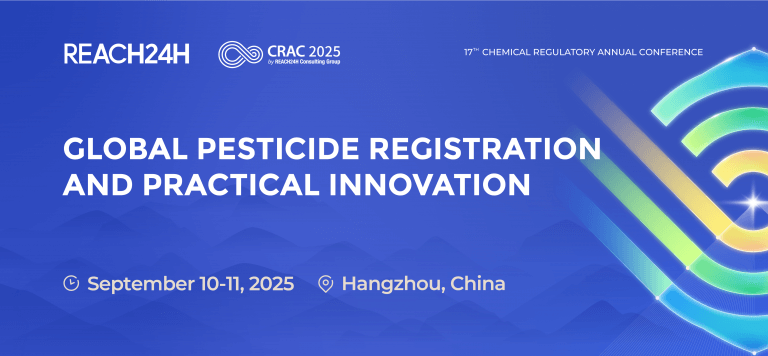Introduction
Technical material refers technical-grade materials and technical concentrates, also known as technical-grade active ingredient (TGAI). TGAI forms the foundation for all formulated pesticide products. It is the product obtained directly from the manufacturing process, containing the active ingredient (AI) together with any associated impurities, and in some cases, small quantities of necessary adjuvants. Technical materials are not market-ready products; rather, they are the source material from which various pesticide formulations are developed.
Registration of a technical material is a critical step in securing market access in regulated jurisdictions such as China, the EU, and the US. It ensures that the active ingredient meets strict quality specifications, that its impurities are within acceptable limits, and that its environmental and toxicological profiles are fully evaluated. Regulatory authorities require that both the technical material and its intended formulations be assessed to guarantee consistency, safety, and efficacy.
This FAQ provides a clear overview of the definition, scope, and regulatory requirements for technical material registration, helping manufacturers, formulators, and regulatory affairs professionals navigate the process, avoid compliance pitfalls, and prepare complete submissions for review by national pesticide registration authorities.
What is the Definition of Technical Materials?
Answer: A technical material refers to a product obtained during the production process, consisting of the active ingredient and related impurities. Small amounts of adjuvants may be added if necessary.
What is the Definition of "the Same Technical Material"?
Answer: "The same technical material" refers to a technical material for which registration is applied, which, compared with an already registered technical material, has an active ingredient content and other key quality specifications not lower than those of the registered one, and the adverse effects caused by its impurities are basically the same as or less than those of the registered technical material.
Can Microbial Pesticides be Applied for Technical Material Registration?
Answer: No. According to the classification of microbial pesticide registration in the "Pesticide Registration Data Requirements", "technical materials of microbial pesticides" are no longer used; instead, they shall be referred to as "technical concentrate of microbial pesticides".
Should Technical Materials and Formulations of New Pesticides be Applied for Registration Simultaneously?
Answer: Yes. When applying for new pesticide registration, applications for both the new pesticide’s technical material and formulation shall be submitted simultaneously, along with pesticide reference standards. Registration approval shall be granted only when both the new pesticide’s technical material and formulation meet the requirements. Registration of new pesticide technical materials or formulations alone will not be approved.
Do Technical Materials and Formulations within the New Pesticide Protection Period Need to be Submitted for Registration Simultaneously?
Answer: No. After a new pesticide is registered, during its protection period, other enterprises applying for registration of the new pesticide (either its technical material or formulation) shall submit applications in accordance with the data requirements. However, simultaneous submission of applications for technical material and formulation registration is no longer required.
Must Technical Materials and Formulations Have the Same Registration Applicant?
Answer: No. Technical materials and formulations of new pesticides may have different registration applicants, but their registration applications shall be submitted simultaneously.
Can a Registration Application be Submitted if the Formulation and the Technical Material Used Exist in Different Forms?
Answer: It depends on specific circumstances. If the existing form of the active ingredient in the technical material used for processing the formulation is inconsistent with that in the formulation (e.g., the formulation is produced through reactions such as esterification or hydrolysis of the technical material), registration of such formulations will not be approved due to the infeasibility of the processing technology. For example, 2,4-D isooctyl ester formulations cannot use 2,4-D technical material as the source, and vice versa. However, if the technical material can be processed into a formulation through simple acid-base reactions, registration of such formulations may be approved. For example, 2,4-D sodium salt formulations can use 2,4-D technical material as the source.





